 W
WPortuguese wine regions are grouped into three levels of classification. At the top are the Denominação de Origem Controlada which are Quality Wines Produced in Specified Regions (QWpsr) under the European Union wine regulations and thus correspond roughly to the French Appellation d'origine contrôlée (AOC) and Spanish Denominación de Origen (DO) classifications. The second group consist of Indicação de Proveniência Regulamentada (IPRs), and are also QWpsr. IPRs are used for DOC candidates "in training", and this level roughly corresponds to the French Vin Délimité de Qualité Superieure (VDQS) system. The final group are the Vinho Regional (VRs), which are table wines with a geographical indication under EU regulations. VRs each cover a larger area and are similar to the French Vin de pays at regional/departmental level.
 W
WThe Açores VR is a Portuguese wine region located in the archipelago of the Azores. This region is classified as a Vinho Regional (VR), which corresponds to table wines with a geographical indication under European Union wine regulations, similar to a French vin de pays region.
 W
WAlentejo is a Portuguese wine region in the Alentejo region. The entire region is entitled to use the Vinho Regional designation Alentejano VR, while some areas are also classified at the higher Denominação de Origem Controlada (DOC) level under the designation Alentejo DOC. VR is similar to the French vin de pays and DOC to the French AOC. In the southern half of Portugal, the Alentejo region covers about a third of the country and is sparsely populated. In 2005, South Oregon University scientist Gregory V. Jones identified Alentejo as the world's most challenged wine region from a climate change perspective. The region is noted for it vast cork production but has in recent years garnered attention for its table wine production. Some producers of this region still do wine in great potteries as in Roman times.
 W
WAlgarve is a Portuguese wine region covering the same areas as its namesake region. The region is classified as a Vinho Regional (VR), a designation similar to a French vin de pays region. Located on the southern coast of Portugal, the region's wine industry is driven by the local tourist economy with very few wines being exported.
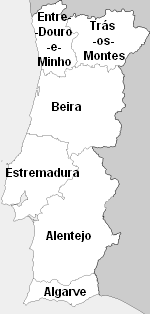 W
WBeiras is a Portuguese wine region covering the same areas as its namesake region. The region is classified as a Vinho Regional (VR), a designation similar to a French vin de pays region. Located in the northern regions of Portugal, Beiras produces wines of every imaginable style including sparkling and fortified wines but quality varies dramatically depending on producer and region.
 W
WBucelas is a Portuguese wine-region located in the Lisboa wine-region. The region has Portugal's highest wine classification as a Denominação de Origem Controlada (DOC). Located south of the Arruda DOC, the region is noted for its potential for cool fermentation white wine production. Vineyards in the area are planted on predominantly loam soils. The white wines of Bucelas became widely popular during the Elizabethan era in England and again during the Victorian age. In London the wines were sometimes described as Portuguese hock because of their similarities to the German Rieslings from the Rhine. Urban sprawl in the 20th century has drastically reduced viticulture in the area, located north of the Portuguese capital city, Lisbon.
 W
WCarcavelos is a Portuguese wine region centered on the Carcavelos municipality in Estremadura region and includes land near the cities of Cascais and Oeiras. The region has Portugal's highest wine classification as a Denominação de Origem Controlada (DOC). Located at the very southern tip of the Estremadura region, the region has a long winemaking history dating back to the 18th century when Sebastião José de Carvalho e Melo, Marquis of Pombal owned vineyards here. The region is known for its fortified wine production, creating off dry, topaz colored wines that have nutty aromas and flavors. While once a thriving wine region, world-renowned in the 19th century for its tawny colored fortified wine, in the modern era Carcavelos has been devastated by real estate development in the suburbs of the capital city of Lisbon and nearby coastal city of Estoril.
 W
WChaves is a Portuguese wine region centered on the town of Chaves in the Trás-os-Montes e Alto Douro region. The region was initially a separate Indicação de Proveniencia Regulamentada (IPR) region, but in 2006, it became one of three subregions of the Trás-os-Montes DOC, which has the higher Denominação de Origem Controlada (DOC) status. Its name may still be indicated together with that of Trás-os-Montes, as Trás-os-Montes-Chaves.
 W
WDão is a Portuguese wine region situated in the Região Demarcada do Dão with the Dão-Lafões sub region of the Centro, Portugal. It is one of the oldest established wine regions in Portugal. Dão wine is produced in a mountainous region with a temperate climate, in the area of the Rio Mondego and Dão rivers in the north central region of Portugal. The region became a Denominação de Origem Controlada (DOC) appellation in 1990. The Dão region is the origin of the Touriga Nacional vine that is the principal component of port wine.
 W
WDouro is a Portuguese wine region centered on the Douro River in the Trás-os-Montes e Alto Douro region. It is sometimes referred to as the Alto Douro, as it is located some distance upstream from Porto, sheltered by mountain ranges from coastal influence. The region has Portugal's highest wine classification as a Denominação de Origem Controlada (DOC). While the region is associated primarily with Port wine production, the Douro produces just as much table wine as it does fortified wine. The non-fortified wines are typically referred to as "Douro wines".
 W
WDuriense is a Portuguese wine region covering the same area as the Douro DOC and the Port wine region. In difference from Douro DOC, Duriense VR is a designation at the lower Vinho Regional (VR) level, which corresponds to table wines with a geographical indication under European Union wine regulations, similar to a French vin de pays region. Thus, it is the simpler or less typical wines of the Douro region that are sold using a Duriense VR label.
 W
WEncostas d'Aire is a Portuguese wine region located on the limestone hills extending across the northern end of the wider Lisboa wine region into the southwestern corner of the Beiras region. The region was initially an Indicação de Proveniencia Regulamentada (IPR) region, but in 2005, it was elevated to Denominação de Origem Controlada (DOC) status, and at the same time the Alcobaça IPR was merged into Encostas d'Aire to form a subregion.
 W
WThe Landscape of the Pico Island Vineyard Culture is a Unesco World Heritage Site on Pico Island.
 W
WLisboa, until 2009 named Estremadura, is a Portuguese wine region covering the same areas as the Estremadura region, and taking its name from the country's capital. The region is classified as a Vinho Regional (VR), a designation similar to a French vin de pays region. While the Beiras and Alentejo VRs are largest geographically, the Lisboa region is Portugal's largest producer of wine by volume. The region stretches from Lisbon along the Atlantic coast to the Bairrada DOC.
 W
WMadeira, officially the Autonomous Region of Madeira, is one of the two autonomous regions of Portugal. It is an archipelago situated in the North Atlantic Ocean, in a region known as Macaronesia, just under 400 kilometres (250 mi) to the north of the Canary Islands and 520 kilometres (320 mi) west of Morocco. Madeira is geologically located on the African Tectonic Plate, though the archipelago is culturally, economically and politically European. Its total population was estimated in 2016 at 289,000. The capital of Madeira is Funchal, which is located on the main island's south coast.
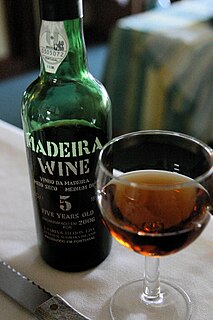 W
WMadeira is a fortified wine made on the Portuguese Madeira Islands, off the coast of Africa. Madeira is produced in a variety of styles ranging from dry wines which can be consumed on their own as an aperitif to sweet wines usually consumed with dessert. Cheaper cooking versions are often flavoured with salt and pepper for use in cooking, but these are not fit for consumption as a beverage.
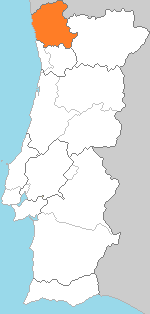 W
WMinho was a former province of Portugal, established in 1936 and dissolved in 1976. It consisted of 23 municipalities, with its capital in the city of Braga. Today, the area would include the districts of Braga and Viana do Castelo. Minho has substantial Celtic influences and shares many cultural traits with neighbouring Galicia in Northwestern Spain. The region was part of the Roman Province and early Germanic medieval Kingdom of Gallaecia. Historical remains of Celtic Minho include Briteiros Iron Age Hillfort, the largest Gallaecian native stronghold in the Entre Douro e Minho region, in North Portugal. The University of Minho, founded in 1973, takes its name from the former province.
 W
WMinho, formerly Rios do Minho, is a Portuguese wine region covering the same areas as the Vinho Verde DOC. The region is classified as a Vinho Regional (VR), a designation similar to a French vin de pays region. The wines of the Minho and Vinho Verde are nearly identical except for the Minho VR allowing foreign grape varieties to be used that are excluded from the Denominação de Origem Controlada (DOC) regulations for Vinho Verde.
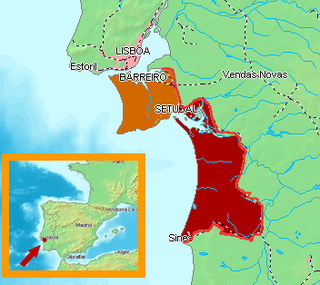 W
WPenínsula de Setúbal, until 2009 named Terras do Sado, is a Portuguese wine region covering Península de Setúbal and most of the Sado River region. The area is classified as a Vinho Regional (VR), a designation similar to a French vin de pays region. With the Setúbal DOC to the northwest and the Atlantic Ocean to the west, the region is almost completely surrounded by the Alentejo VR.
 W
WThe Pico IPR is a Portuguese wine region located on the island of Pico in the Portuguese archipelago of the Azores. The region is designated a second-tier Indicação de Proveniencia Regulamentada (IPR) classification, and potentially may be reclassified as a product of Denominação de Origem Controlada (DOC).
 W
WTávora-Varosa is a Portuguese wine region located in the northwestern section of the Beiras region. The region is designated as Denominação de Origem Controlada (DOC) after it was promoted from its former Indicação de Proveniencia Regulamentada (IPR) status, when it was called Varosa IPR. At the same time, the former Encostas da Nave IPR, bordering the Douro, was absorbed into the Távora-Varosa DOC.
 W
WTejo, until 2009 named Ribatejo, is a Portuguese wine region covering the same areas as the Ribatejo Province. It takes its name from the river Tejo (Tagus). The entire region is entitled to use the Vinho Regional designation Tejo VR, while some areas are also classified at the higher Denominação de Origem Controlada (DOC) level under the designation DoTejo DOC. VR is similar to the French vin de pays and DOC to the French AOC.
 W
WTerras Madeirenses is a Portuguese wine region situated on the islands of Madeira, both on the main island and on the Porto Santo Island. The region is classified as a Vinho Regional (VR), which corresponds to table wines with a geographical indication under European Union wine regulations, similar to a French vin de pays region. Terras Madeirenses is a designation for simpler, non-fortified wines from Madeira, while the more famous fortified Madeira wines use the designation Madeira DOC.
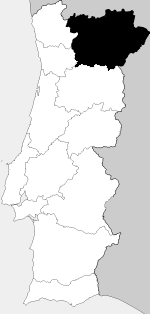 W
WTrás-os-Montes is a Portuguese wine region located in the Trás-os-Montes e Alto Douro region. The entire wine region is entitled to use the Vinho Regional designation Transmontano VR, while some areas are also classified at the higher Denominação de Origem Controlada (DOC) level under the designation Trás-os-Montes DOC. VR is similar to the French vin de pays and DOC to the French AOC.
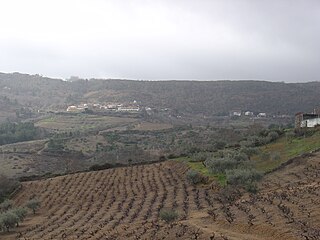 W
WValpaços is a Portuguese wine region centered on the town of Valpaços in the Trás-os-Montes e Alto Douro region. The region was initially a separate Indicação de Proveniencia Regulamentada (IPR) region, but in 2006, it became one of three subregions of the Trás-os-Montes DOC, which has the higher Denominação de Origem Controlada (DOC) status. Its name may still be indicated together with that of Trás-os-Montes, as Trás-os-Montes-Valpaços. Located along the Tua River, the region is known for its slightly sparkling rosé.
 W
WThe Viana do Castelo District is a district located in the northwest of Portugal, bordered on the north by Spain (Galicia) and on the south by Braga District. It has an area of 2,255 km2 and a population of 252,011 (2006), for a density of 111.8 inhabitants/km2. The district capital is the city of Viana do Castelo.
 W
WVinho Verde refers to Portuguese wine that originated in the historic Minho province in the far north of the country. The modern-day 'Vinho Verde' region, originally designated in 1908, includes the old Minho province plus adjacent areas to the south. In 1976, the old province was dissolved.